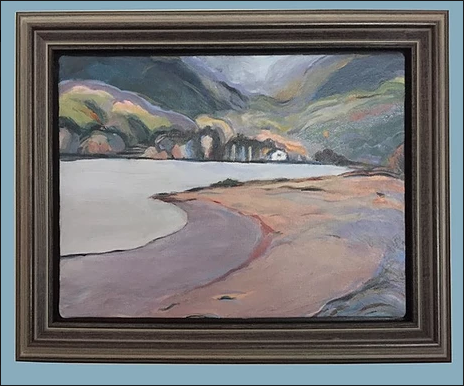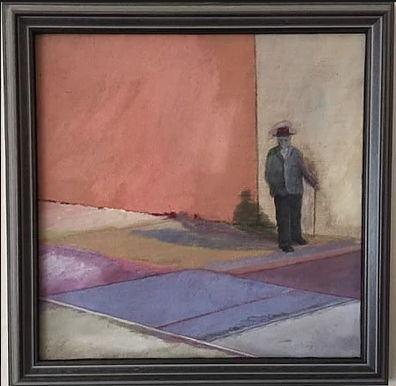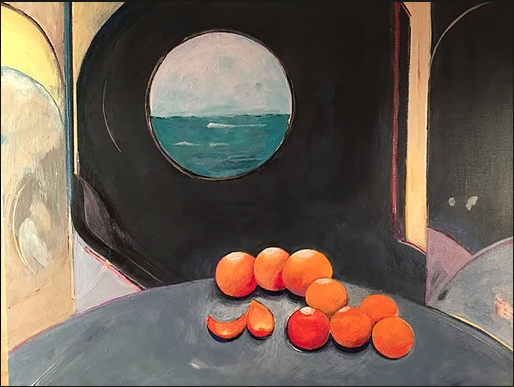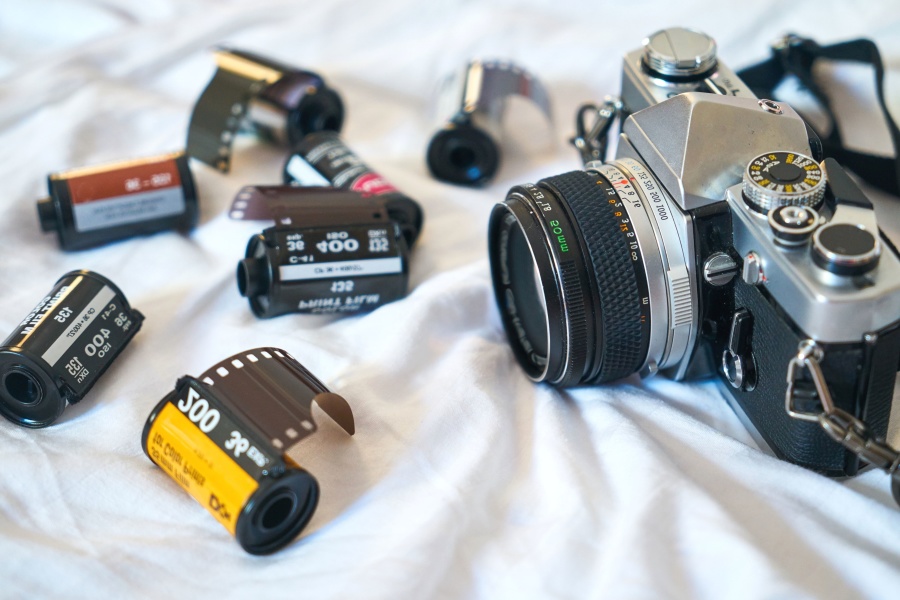Written by Anthony Lebron
Edited and packaged by Katie Donlevy
Students in Professor Lindsay Lennon’s Feature Writing class were assigned interviews with SUNY New Paltz alumni who were featured in Wired Gallery’s “Golden Age of New Paltz” exhibition. This is what they found:
Win Bottum-Morgan contemplated multiple career paths before deciding on clinical psychology, one of which was painting. His passion for the art led him first to Clark University for its affiliation with the Worcester Museum School and eventually to SUNY New Paltz where he became a member of the Golden Age of New Paltz. Although Bottum-Morgan did not pursue a career in painting, he continues to create his art for himself and uses the lessons it has taught him in his everyday life.
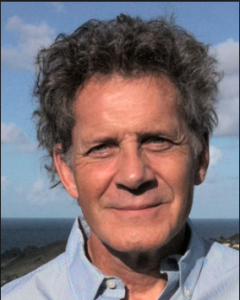 Win Bottum-Morgan is an alumnus and former art student of SUNY New Paltz, but originally attended SUNY Albany as an English major. “I took a drawing class thinking I would be taught how to draw; instead I was taught how to see.” His newfound interest in the arts led to his decision to transfer to Clark University in Worcester, Massachusetts because of its affiliation with the Worcester Museum School. Bottum-Morgan transferred to SUNY New Paltz during the late 1960’s because of the art department’s excellent reputation. Psychology eventually piqued his interest and he pursued a Ph.D in clinical psychology at Adelphi University’s Institute for Advanced Psychology.
Win Bottum-Morgan is an alumnus and former art student of SUNY New Paltz, but originally attended SUNY Albany as an English major. “I took a drawing class thinking I would be taught how to draw; instead I was taught how to see.” His newfound interest in the arts led to his decision to transfer to Clark University in Worcester, Massachusetts because of its affiliation with the Worcester Museum School. Bottum-Morgan transferred to SUNY New Paltz during the late 1960’s because of the art department’s excellent reputation. Psychology eventually piqued his interest and he pursued a Ph.D in clinical psychology at Adelphi University’s Institute for Advanced Psychology.
What is your most important artistic tool?
Trusting my intuition and trying to make the internal space in myself to allow what wants to emerge the freedom to do so.
What’s your favorite part of the process when it comes to your work?
That comes down to following intuition again, but then as you proceed these happy accidents, as well as collisions, will occur, which will open new doorways. Of course, some don’t result in anything, but when something works it’s very satisfying and nurtures your ability to trust the process to see what might be revealed.
When do you know when a painting is completed?
This is a tough question. Sometimes I’ll change something years later, but, in general, when I get a sense that I’m being too precious with any new change to the work it’s definitely time to stop.
Is there an artwork you are most proud of? Why?
That would be the painting I’ve just recently been working on. The “why” is more pragmatic than anything else. It’s the first painting I’ve done in quite a while and, besides the usual frustrations that always occur with the artistic process, getting back in touch with the business of intuition and being in the space where the cerebral and logic don’t have the last word is very rewarding.
How has your practice changed over time?
I think I have a little more courage now than in past decades and am just a little bit less of a perfectionist.
What is your favorite or most inspirational place?
This varies a great deal but in the summers I get to spend some time up in the Sierras and that’s almost always wonderful. I also value the space that can occur in meditation where you get a sense of an inner essence that’s more than just the socialized self the world requires us to be most of the time.
What is your dream project?
I can’t say I have one. Maybe the best answer to that would be the next painting. In a completely different realm, the dream project would be learning some more guitar pieces.
What art do you most identify with?
I’m particularly fond of Francis Bacon and also Wayne Thiebaud, especially his work of the last decade or so. Also, I like Sigmar Polke and Willem de Kooning.
What role does the artist have in society?
That’s hard to say… maybe simply to indicate that there are ways to live that don’t involve competition and which show the validity of expressing one’s internal life and the thrust of the inner self.
“I can’t say I have [a dream project]. Maybe the best answer to that would be the next painting.” – Win Bottum-Morgan
What is an artistic outlook on life?
Another tough question. Maybe trying to maintain some awareness of perceiving the essence of things, rather than their names, labels, and usefulness—rather, just trying to see things directly. That ties into the notion of seeing things as they are, which is often talked about in Buddhism.
When you hear “Golden Age of New Paltz,” what comes to mind?
A great community of friends and kindred spirits. It’s really my family of origin, much more so than the biological one.
Do you have advice for anyone who wants to be an artist?
If you’re not wealthy and/or privately funded, make sure you’ve got some way to finance your life so that you’re relatively free to pursue the things that are aesthetically important to you.
Read about other #GoldenAge artists here:
Jack Murphy offers a snapshot of what it was like to be an artist in New Paltz during the “Golden Age,” and his inspiration behind curating the exhibition.
Fern T. Apfel is a text-based illustrative artist who constructs collages using various mediums. An alumna of SUNY New Paltz, Apfel reflects on her growth, inspirations and favorite artists.
Jo-Ellen Trilling is an artist from the era of protest art in 1968 to 1971 who intertwines magical realism with art to reflect life within the political climate at the time.
Bruce Pileggi is an alumnus of SUNY New Paltz who delves into his past and explores themes that motivated him to pursue a career in art.
Jerry Vis is an architectural designer who, at 79 years old, still remains creatively curious when it comes to making art.
Ed Samuels began drawing early in his childhood after being influenced by his family of artists. He found his niche during the ‘60s and ‘70s after seeing the beauty in all environments, from New York City streets to Sante Fe’s cliffs and beaches.
Jon Ellis Stevens is an award-winning photographer and New Paltz alumnus. He discusses his desire to show that photography is more than capturing still images and how the radical times of the ‘60s inspires his artwork.
Sevan Melikyan is a native from Turkey who journeyed with the dream of becoming an artist to America, where he became enthralled with the rich artistic history of New Paltz.
Eileen Cowin is a multi-medium artist from New York who creates politically charged work inspired by the 1970s and today and connects them in abstract ways.
Shelley Davis is a woman of many art forms, including a style she created herself as a graduate student. Her groundbreaking “photo fusion” art has travelled the globe, featured in galleries across Europe and the United States.
Robert Crimi is an artist from the Bronx who is inspired by jazz music and creates colorful oil paintings with techniques his muralist uncle taught him.
Rosalie Rossi, an alumna of SUNY New Paltz, has taught art to students from preschool to the college level. She believes every student she teaches should do a self portrait.
Michael Velkovich, an alumnus of SUNY New Paltz, uses printmaking to express his artistic vision. He reflects on his journey as an artist, how he faced critics and how he has given back to the arts community.
Aletta Vett is a costume designer who defied rules and honed her craft at New Paltz. Her art designs prove just how creative and talented she has been over her decades-long career.
Larry Audette, not only an artist but a Jazz musician, talks about his memorable time at New Paltz with an array of artists who felt like family to him.
Rosalind “Roz” Zarr creates wearable art. Her jewelry is the only of its medium featured in the “Golden Age of New Paltz,” a testament of her prolific experience at the university in the late ’60s.
